#hogarth shakespeare
Text
I was confused upon finishing the novel, to say the least. Where was the angry, independent, driven, feminist main character I had so loved in “10 Things I Hate About You?” Why would Tyler, a modern writer, go through the effort of reimagining Shakespeare’s version of the story and not even bother to alter the more traditional messaging with a take that directly addresses the societal expectations of women? The original work objectifies and subjugates its female lead, so the logical next step would be for a modern retelling to directly combat this instead of addressing the standards of toxic masculinity, as “Vinegar Girl” does. I had heard of the speech Kate’s character delivers at the end of the play, detailing how wives should strive to obey their husbands and a woman’s proper place in a marriage — why would Tyler blatantly avoid any discussion of this theme? I was annoyed, but I was also curious. Shouldn’t we be updating the classic stories that don’t align with our modern cultural values by directly challenging the original offensive material?
#shakespeare#william shakespeare#hogarth shakespeare#books#writing#writers#shakespeare and adaptation#vinegar girl#anne tyler
7 notes
·
View notes
Text
Book Review - Vinegar Girl by Anne Tyler
Book Review – Vinegar Girl by Anne Tyler
⭐⭐⭐⭐
Rating: 4 out of 5.
After reading French Braid earlier this year, I decided that it was time to read more Anne Tyler. I decided to start with the book that I’ve had on my shelf for over 5 years. Just as I initially did with the contemporary retellings of Jane Austen novels, I completely bought into the idea of updating Shakespeare. I really wanted to read them all and see how good they…

View On WordPress
#Anne Tyler#book blogger#book blogging#book review#books#female writers#Hogarth Shakespeare#retelling#rewriting#William Shakespeare
0 notes
Text





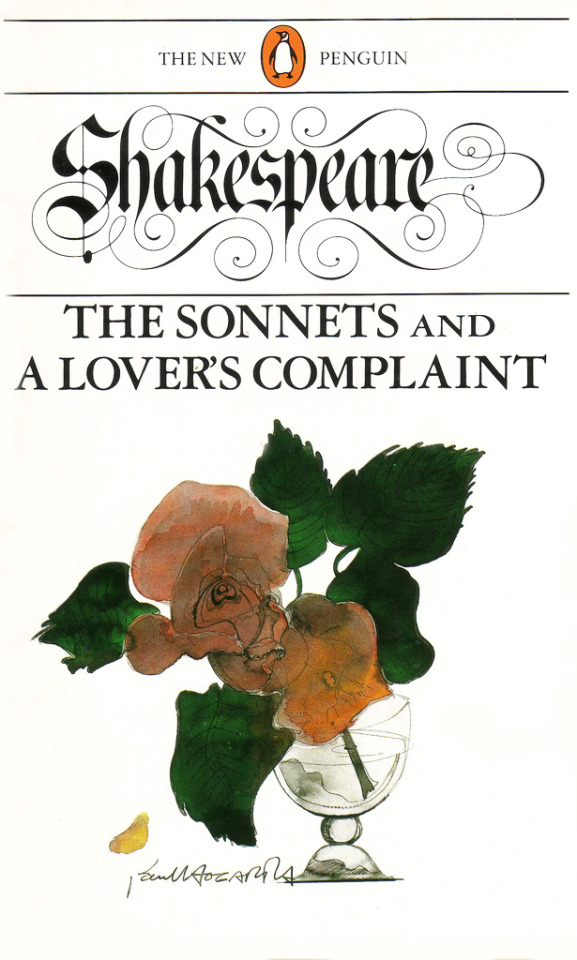
more of those incredible Paul Hogarth playbook covers
895 notes
·
View notes
Text
Ladies today do something just for you or your education.
A Room Of One’s Own Day is a momentous occasion that falls on January 25 each year, and we’re going to help you celebrate. Do you know that the book by Virginia Woolf which was the inspiration behind this holiday is more than 93 years old? A Room Of One’s Own Day celebrates the privacy of having one’s own room and is also symbolic of independence. It also reminds us that it is the privileged who have their own rooms and that we can appreciate and look after what we have. It also reminds us of the ongoing struggle for females to receive an education.
HISTORY OF A ROOM OF ONE’S OWN DAY
Adeline Virginia Woolf, one of the most influential writers of the twentieth century, was born on March 25, 1882. She was the seventh of eight children born to Julia Prinsep Jackson and Leslie Stephen. Her father is said to have been the one who inspired Woolf to take up writing as a profession.
Woolf began writing in 1900. In 1912, she married Leonard Woolf, and the couple set up the Hogarth Press, which would in the future be the publishing house that released most of Woolf’s works. Her written works are said to be the inspiration behind modern-day feminist movements, and it continues to inspire young women to be independent. Though Woolf has written several masterpieces, her most famous essay is “A Room Of One’s Own” which came out in 1929. It dealt mainly with the lack of freedom of expression of women in those times. It advocated access to education for women. This novel played a key role in inspiring the feminist movements of the 1970s.
Though the exact origins of A Room Of One’s Own Day are not known, this day has been celebrated annually by millions as a day to celebrate independence and self-sustainability. Some might take the day in a literal way and celebrate it by decorating one’s own room or simply enjoying the comfort and privacy of one’s own room. Others might take it figuratively and observe this day by shutting the metaphorical door to things they are no longer interested in and celebrating independence.

HOW TO OBSERVE A ROOM OF ONE’S OWN DAY
Do something creative in your room. Your room is your kingdom. Let out your creative skills and give your new room a new look. Add new furniture. Paint the walls. Make posters. Clean your room. The idea is to renovate your room and take it to the next level.
Share it on social media. Let everyone know that you're celebrating this day. Take pictures of your room after you have refurbished it and post them on social media. This will inspire many others to celebrate this day.
Read a good book about women. Many of the rights and freedoms today’s women enjoy are new. Read a good book about the struggle and the amazing women who led the fight.
5 FACTS ABOUT THE NOVEL “A ROOM OF ONE'S OWN” THAT WILL BLOW YOUR MIND
It was made for Cambridge student societies. Woolf wrote this essay based on two papers she read for two student societies in Cambridge.
Judith was a fictional character. Woolf invented the fictional character of Judith as the sister of William Shakespeare.
It had lesbianism. One section of the book deals with a fictional female writer's relationship with another woman.
It faced criticism. The book was criticized for the sensitive content and also because many women felt that women of color faced greater prejudice and discrimination, which was not covered in the novel.
It was adapted into plays“Balancing the Moon” (2011) was one of the many plays adapted from this novel.
WHY A ROOM OF ONE’S OWN DAY IS IMPORTANT
It allows us to appreciate the freedom of having our own room. Having a room of our own is a luxury that we often take for granted. Many people in this world either don’t have a roof over their heads or are sharing a house with others. This day allows us to appreciate the luxury of having our own rooms.
It is symbolic of independence. A Room of One's Own Day is symbolic of standing on our own and being independent. This day figuratively reminds us to have our rooms, that is, to be self-sufficient and not be dependent on others.
It reminds us to close the doors to things that are detrimental to our well-being. A Room of One's Own Day is a reminder that we need to close the door to people, and also things, that are toxic and hinder our growth and success. It is a day to be introspective and clear out the junk from your metaphorical “room”.
#January 25#A Room Of One’s Own Day#virginia woolf#Women and education#Hogarth Press#A Room Of One's Own#Balancing the Moon
56 notes
·
View notes
Text
The Pre-Raphaelites' Top Best List
In 1905, William Holman Hunt wrote a book Pre-Raphaelitism and the Pre-Raphaelite Brotherhood, where he recounted the formation of a declaration regarding immortality in the arts. Written by Hunt and Dante Gabriel Rossetti in 1848, it reads like a who's who of intellectuals, poets, and philosophers — among others. With a zealous, youthful approach to the relevance of each, they chose a star rating to establish the priority the list members held for the Pre-Raphaelites. Interestingly, Raphael, whose work was the catalyst for the movement's rebellion, is listed and awarded one star. It makes me want to go back in time and have dinner with Hunt and Rosetti and ask them about the inclusion of Raphael and also Columbus, curiously, in their list.
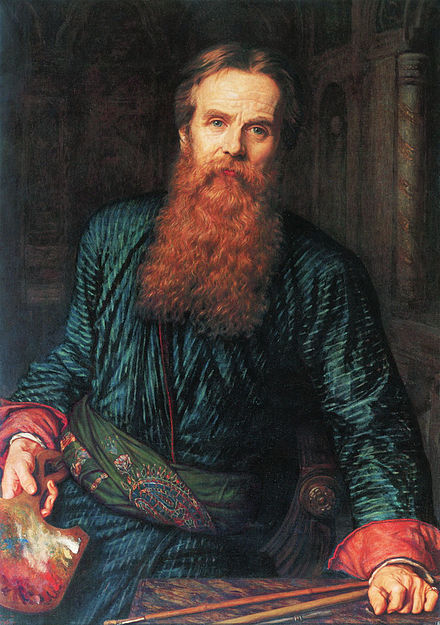
William Holman Hunt • Self-portrait • 1867 • Galleria degli Uffizi, Florence
Once, in a studio conclave, some of us drew up a declaration that there was no immortality for humanity except that which was gained by man’s own genius or heroism. We were still under the influence of Voltaire, Gibbon, Byron, and Shelley, and we could leave no corner or spaces in our minds unsearched or unswept. Our determination to respect no authority that stood in the way of fresh research in art seemed to compel us to try what the result would be in matters metaphysical, denying all that could not be tangibly proved. We agreed that there were different degrees of glory in great men and that these grades should be denoted by one, two, or three stars… Gabriel wrote out the following manifesto of our absence of faith in immortality, save in that perennial influence exercised by great thinkers and workers:
We, the undersigned, declare that the following list of Immortals constitutes the whole of our Creed, and that there exists no other Immortality than what is centred in their names and in the names of their contemporaries, in which this list is reflected:
Jesus Christ****, The Author of Job***, Isaiah, Homer**, Pheidias, Early Gothic Architects, Cavalier Pugliesi, Dante*, Boccaccio*, Rienzi, Ghiberti, Chaucer**, Fra Angelico*, Leonardo da Vinci**, Spenser, Hogarth, Goethe**, Flaxman Hilton, Kosciusko, Byron, Wordsworth, Keats**, Shelley**, Haydon, Cervantes, Joan of Arc, Mrs. Browning*, Patmore*, Raphael*, Michael Angelo [sic], Early English Balladists, Giovanni Bellini, Georgioni, Titian, Tintoretto, Poussin, Alfred**, Shakespeare**, Milton, Cromwell, Hampden, Bacon, Newton, Landor**, Thackeray**, Poe, Hood, Longfellow*, Emerson, Washington**, Leigh Hunt (Author of Stories of Nature*), Wilkie, Columbus, Browning**, Tennyson

Dante Gabriel Rossetti • Self-portrait • 1847 • Pen and ink on paper
#art#painting#fine art#art history#pre raphaelite brotherhood#oil painting#ophelia#john everett millais#pre raphaelite manifesto#19th century british art#art movements#literary painting#shakespeare plays
12 notes
·
View notes
Text
love the paul hogarth shakespeare covers. wish measure for measure’s looked a little less kkk.
2 notes
·
View notes
Photo
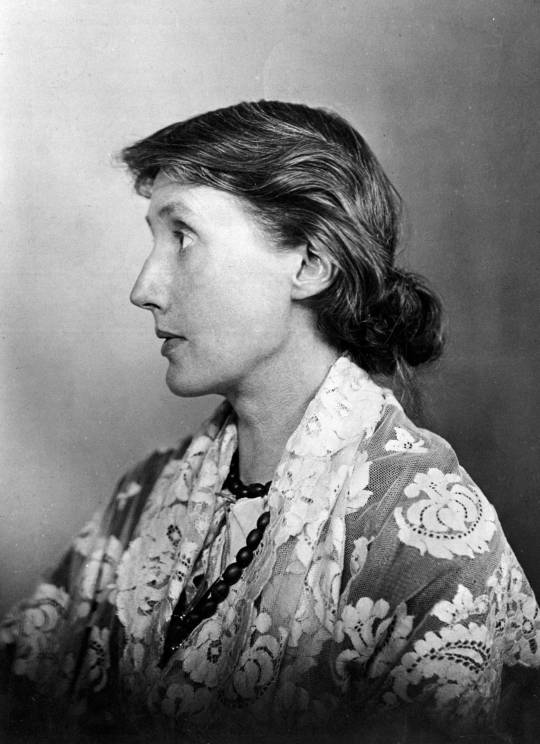
Virginia Woolf (1882–1941)
A prominent modernist writer best known for her novels, essays, diaries, and letters, and for her use of the stream-of-consciousness technique to weave the memories and interior thoughts of her characters into the narrative. As a result, her work is characterized by vibrant portraits of its main characters, and in particular for its nuanced and deep portrayals of the inner lives of women. Woolf wrote about the rapidly shifting technologies and gender roles of the time in which she lived. She also emphasized moving beyond framing experience in terms of binary oppositions, advocating instead for a “perpetual marriage of granite and rainbow” (“The New Biography”) and bringing a more imaginative approach to fiction.
In particular, Virginia Woolf was interested in the idea of biography, and of exploring “an ordinary mind on an ordinary day” (from “Modern Fiction”) rather than people deemed “great” by society. In her essay “The Art of Biography”, Woolf wrote:
“The question now inevitably asks itself, whether the lives of great men only should be recorded. Is not anyone who has lived a life, and left a record of that life, worthy of biography – the failures as well as the successes, the humble as well as the illustrious.”
She ran Hogarth Press, a publishing house, with her husband Leonard Woolf, publishing writers like T S Eliot, Sigmund Freud, Katherine Mansfield, E M Forster, and of course the Woolfs themselves. The couple’s house was a hub for lots of intellectual activity, namely by the Bloomsbury Group, a group of artists, writers, and intellectuals who were massively influential in the early 20th century.
In 1922, after the publication of her novel Jacob’s Room, the first of her more nontraditional works, she wrote in her diary: “There’s no doubt in my mind that I have found out how to begin (at forty) to say something in my own voice, and that interests me so that I feel I can go ahead without praise.” Later that year, she notes further, “At forty I am beginning to learn the mechanism of my own brain – how to get the greatest amount of pleasure and work out of it.” Virginia’s most well-known novels are Mrs. Dalloway (1925) and To The Lighthouse (1927), and one of her best-known essays is “A Room of One’s Own” (1929), a key work of feminist literary criticism that imagines a sister for William Shakespeare and examines the limitations placed on women who make art in comparison to men. She also originated the concept of the “Angel of the House” in her essay “Professions for Women”, a confined figure who must stay at home, perpetuate womanly virtues, and sacrifice for the men of the household; it is thought that this relates to her difficult upbringing, with a father who was both a famous writer and also abusive to Virginia and her siblings.
In terms of Virginia’s personal life, she struggled with depression throughout her life, experiencing multiple nervous breakdowns and periods of deep grief related to the death of her parents and brother. Virginia experienced romantic attachments to several women in her late teens and early twenties, including Madge Vaughan and Violet Dickinson (about whom Virginia wrote in her diary in 1922: “is love the word for these strange deep ancient affections, which began in youth and have got mixed up with so many important things?”). She met and began an affair with Vita Sackville-West around 1924, which eventually culminated in Orlando, a Biography (1928), frequently referred to as “the longest love letter in the English language.”
Ultimately, as World War II’s threat to life in England grew, Woolf found herself unable to write any longer and took her own life in March, 1941. She left her husband, Leonard, this message: “I owe all my happiness in life to you. You have been so perfectly good.”
4 notes
·
View notes
Photo

Tatsuya Nakadai in The Scandalous Adventures of Buraikan (Masahiro Shinoda, 1970)
Cast: Tatsuya Nakadai, Shima Iwashita, Tetsuro Tanba, Shoichi Ozawa, Fumio Watanabe, Suisen Ichikawa, Masakane Yonekura, Jun Hamamura. Screenplay: Shuji Terayama, based on a play by Mokuami Kawatake. Cinematography: Kozo Okazaki. Art direction: Shigemasa Toda. Film editing: Yoshi Sugihara. Music: Masaru Sato.
I think I was culturally ill-equipped for The Scandalous Adventures of Buraikan, a wittily stylized film that presupposes an acquaintance with Japanese history and culture that I don't possess. From my own culture, I bring a knowledge of 18th-century portrayals of London lowlife, such as the pictures of Hogarth and the satire in John Gay's The Beggar's Opera. Buraikan has echoes for me of those, as well as, in its portrayal of the puritanical reformer's zeal, Shakespeare's Measure for Measure. But for much of the film I felt at sea. That said, I like Tatsuya Nakadai so much I'd watch him read the Tokyo telephone book.
2 notes
·
View notes
Text
In the 20th century.
Biography of translators in the 20th century.

Tadeusz Boy-Żeleński (1874-1941), a Polish poet, translated more than 100 French literary classics, including works by poet François Villon, by writers Rabelais and La Rochefoucauld, by philosophers Montaigne and Montesquieu, by novelists Stendhal, Balzac and Proust, by playwrights Molière, Racine, Marivaux and Beaumarchais, and by philosophers Voltaire, Descartes and Pascal. He was murdered in July 1941 during the Nazi occupation of Poland, together with 24 other Polish professors, in what became known as the massacre of Lviv professors (Lviv is now in Ukraine).
Zenobia Camprubi (1887-1956), a Spanish feminist writer, was the first translator of Bengali writer Rabindranath Tagore’s works into Spanish, and translated 22 works by Tagore (collections of poems, short stories, plays) over the years. Married to Spanish poet Juan Ramón Jiménez, she was a pioneer of feminism for actively promoting women in society in all the places where she lived (Spain, Cuba, the United States, Puerto Rico).
James Strachey (1887-1967), an English psychoanalyst, translated with his wife Alix Strachey (1892-1973) all the works of Austrian psychoanalyst Sigmund Freud after moving to Vienna, Austria. The 24-volume translation was published by Hogarth Press in London under the title “The Standard Edition of the Complete Psychological Works of Sigmund Freud”, with introductions to Freud’s various works, and extensive bibliographical and historical footnotes. It became the reference edition of Freud’s works in English, as well as a reference work for translations into other languages.
Boris Pasternak (1890-1960), a Russian writer, turned to translation to provide for his family after being vilified for his refusal to glorify communist values in his writings. He translated works by German poets Goethe, Rilke and Schiller, by French poet Verlaine, by Spanish dramatist Calderón de la Barca, and by English playwright Shakespeare. Because of their colloquial and modernised dialogues, his translations of Shakespeare’s plays were more popular with Russian audiences than translations by Russian writers Mikhail Lozinsky (1886-1955) and Samuil Marshak (1887-1964).
Jorge Luis Borges (1899-1986), an Argentine writer, translated into Spanish — while subtly transforming — works by English writers Rudyard Kipling and Virginia Woolf, by American writers William Faulkner, Edgar Allan Poe and Walt Whitman, by German writers Hermann Hesse and Franz Kafka, by French writer André Gide, and by others. He also wrote and lectured extensively on the art of translation.
Charlotte H. Bruner (1917-1999), an American scholar, translated works by African French women writers for them to reach a wider audience. With her husband David Kincaid, she spent one year in Africa interviewing these women writers, and aired these interviews after their return to the United States. She was a pioneer in African studies and in world literature at a time when American universities mainly taught European literature.
Simin Daneshvar (1921-2012), an Iranian writer, and Jalal Al-e-Ahmad (1923-1969), an Iranian philosopher, translated many literary works into Persian. Simin Daneshvar translated works by Russian writers Anton Chekhov and Maxim Gorki, by American writer Nathaniel Hawthorne, by Austrian writer Arthur Schnitzler, by Armenian-American writer William Saroyan and by South African writer Alan Paton. Jalal Al-e-Ahmad translated works by Russian novelist Fyodor Dostoyevsky and by French writers Albert Camus, Jean-Paul Sartre, André Gide and Eugène Ionesco.
1 note
·
View note
Text
Review: Hag-Seed, by Margaret Atwood
Review: Hag-Seed, by Margaret Atwood
Another Hogarth Shakespeare Project book that I thoroughly enjoyed despite it having two major challenges for me. The first challenge is that I know virtually nothing about the original The Tempest. The second is that I have had issues with Ms. Atwood’s writing for many years, which I only recently confronted and re-evaluated. A third factor was that I kept hearing the wonderfu satirical song…
View On WordPress
0 notes
Text
Books, Books, Books! (aka, mid-year book freakout)
I normally only post my 5-star list to facebook and I might also do that here, but I wanted to do something extra.
I don’t want to say how many books I’ve read so far this year because it’s frankly a little embarrassing because the number is so high.
Here we go!
best book you’ve read so far? Ship of Theseus by Doug Dorst. It’s literally indescribable.
best sequel you’ve read so far? We Free the Stars by Hafsah Faizal
new releases you want to read? Tokyo Dreaming by Emiko Jean, The Hacienda by Isabel Canas (which I just got notified came in on hold), Siren Queen by Nghi Vo, Queerly Beloved by Susie Dumond, Improbable Magic for Cynical Witches by Kate Scelsa, Remarkably Bright Creatures by Shelby Van Pelt, The Change by Kirsten Miller, This is Not the Real World by Anna Carey, Out of the Blue by Jason June, Yerba Buena by Nina LaCour, Counterfeit by Kirsten Chen, A Little Bit Country by Brian Kennedy, and The Key to Deceit by Ashley Weaver
most anticipated to still be released in 2022? Babel by R.F. Kuang, The Ballad of Never After by Stephanie Garber, Foul Lady Fortune by Chloe Gong, Bloodmarked by Tracey Deonn, and The Shattered City by Lisa Maxwell
biggest disappointment? Hotel Magnifique by Emily Taylor. I heard it was so good and it’s a beautiful book, just poorly written
biggest surprise? Macbeth by Jo Nesbo. I finally finished the Hogarth Shakespeare series, and a lot of them were mediocre, but I was really impressed with this one.
new favorite author? Amanda Bestor-Siegal (The Caretakers)
new fictional crush? Claire from Delilah Green Doesn’t Care
new favorite character? Rene Delacroix from Sailing By Orion’s Star by Katie Crabb
a book that made you cry? The House in the Cerulean Sea by TJ Klune
a book that made you happy? Count Your Lucky Stars by Alexandria Bellefleur
most beautiful book you’ve bought? Either Fairyopolis (found for $3 while thrifting) or the MinaLima Harry Potters
what do you want to read before 2022 ends? Too many books to list! Everything on my Goodreads list that hasn’t come out yet, and everything on my almost 300 book Google doc TBR
1 note
·
View note
Text
“It’s hard being a man, Have you ever thought about that? Anything that’s bothering them, men think they have to hide it. they think they should seem in charge, in control; they don’t dare show their true feelings. No matter if they’re hurting or desperate or stricken with grief, if they’re heartsick or they’re homesick or some huge dark guilt is hanging over them or they’re about to fail bigtime at something “Oh, I’m okay” they say. “Everything's just fine” They’re a whole lot less free than women are, when you think about it.”
Vinegar girl - Anne Tyler
#Vinegar girl#Anne Tyler#William Shakespeare#the taming of the shrew#romance#men#Hogarth Shakespeare
3 notes
·
View notes
Text
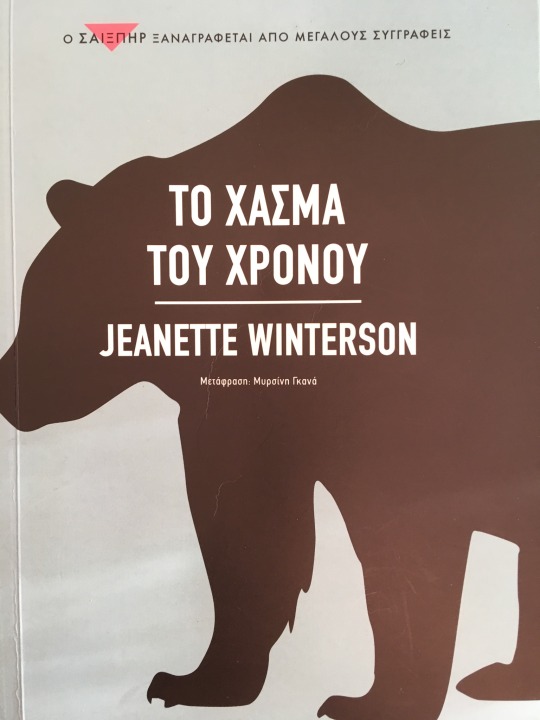
Ένα καταπληκτικό βιβλίο, σύγχρονη μεταφορά ενός έργου του Σαίξπηρ.
“ Το βιβλίο εντάσσεται στη σειρά Hogarth Shakespeare Project: τα πιο αγαπημένα έργα του μεγαλύτερου δραματουργού όλων των εποχών ξαναγράφονται από τους σπουδαιότερους σύγχρονους συγγραφείς. Η Jeanette Winterson ξαναγράφει το "Χειμωνιάτικο παραμύθι". Σε μια ανεμοδαρμένη πόλη του αμερικάνικου Νότου, τη Νέα Βοημία, μια νύχτα ένας άγνωστος εγκαταλείπει ένα βρέφος στην είσοδο ενός νοσοκομείου. Είναι η μικρή Περντίτα, την οποία ο πατέρας της, τρελός από ζήλια, δεν αναγνωρίζει και εξορίζει για πάντα από τη ζωή του και από το Λονδίνο. Δεκαεπτά χρόνια αργότερα η Περντίτα αγνοεί βασικά στοιχεία για την ταυτότητα και την καταγωγή της, αλλά σύντομα θα ανακαλύψει ποια είναι η οικογένειά της. Η εκδοχή του σαιξπηρικού "Χειμωνιάτικου παραμυθιού" διά χειρός Jeanette Winterson αφηγείται μια σπαρακτική ιστορία για καρδιές που ράγισαν και καρδιές που γιατρεύτηκαν από τις πληγές τους, μια ιστορία για τη μανία της εκδίκησης και τη δύναμη της συγχώρεσης, μια ιστορία που αποδεικνύει πως ό,τι χάνεται δεν μένει χαμένο για πάντα.”
“Και ο κόσμος συνεχίζει να κινείται ανεξάρτητα από τη χαρά ή την απελπισία ή την τύχη κάποιας γυναίκας ή την απώλεια κάποιου άντρα. Και δεν μπορούμε να γνωρίζουμε τη ζωή των άλλων. Και δεν μπορούμε να γνωρίζουμε την ίδια τη ζωή μας, πέρα από ταις λεπτομέρειες που μπορούμε να διαχειριστούμε.”
“Χρειάζεται τόσος λίγος χρόνος για να αλλάξει μια ολόκληρη ζωή και χρειάζεται μια ολόκληρη ζωή για να καταλάβεις την αλλαγή.”
“Η Ερμιόνη κάνει το πιο δύσκολο πράγμα που μπορεί να κάνει κανείς για να διορθώσει μια λάθος κατάσταση: τίποτα.”
“Το παρελθόν καιροφυλακτεί σαν ενέδρα και υποθηκεύει το μέλλον αν δεν ανακτηθεί. Ο χρόνος μπορεί να ανακτηθεί. Αυτό που χάθηκε, βρέθηκε…”
1 note
·
View note
Photo
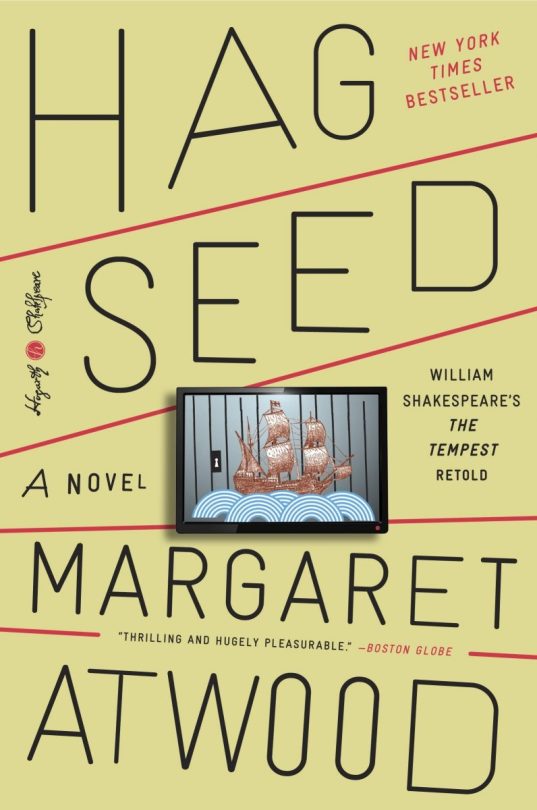
(via Review: Hag-Seed by Margaret Atwood)
REVIEW: HAG-SEED BY MARGARET ATWOOD
Hag-Seed by Margaret Atwood is one book that is not to be missed if you are a fan of Shakespeare and his plays. Margaret Atwood has crafted an interesting and creative revisiting of Shakespeare’s The Tempest in this 4th book in the Hogarth Shakespeare series. This book actually is a story within a story that has a familiar setting and cast of colourful characters.
1 note
·
View note
Link
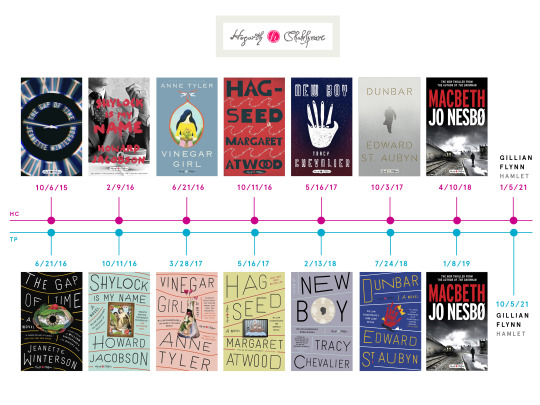
If you haven’t tried the Hogarth Shakespeare series you should! You will have plenty of time to catch up before Gillian Flynn’s Hamlet (title to come) arrives in the Fall of 2021.
#hogarth shakespeare#margaret atwood#anne tyler#tracy chevalier#edward st aubyn#jo nesbo#howard jacobson#jeanette winterson#hogarth#shakespeare#retold
12 notes
·
View notes
Quote
I discover grief is living with someone who is not there.
Jeanette Winterson, from The Gap of Time
#quotes#jeanette winterson#the gap of time#the winter's tale#hogarth shakespeare#william shakespeare
249 notes
·
View notes